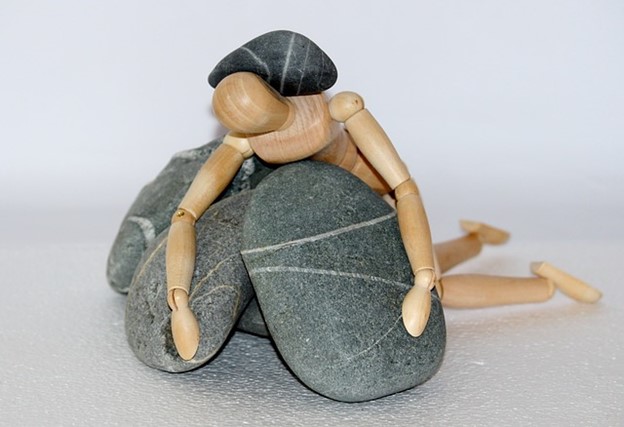Estimated reading time: 6 minutes

Happy New Year! The holiday parties are over, the cookies have been eaten, and that can only mean one thing: It’s time to make your New Year’s resolution.
But this year’s going to be different. You’re actually going to succeed in this annual ritual of behavioral change.
Why?
Because this year you’re going to be strategic.
Before we dive in, two caveats in case you’re reading this after January 1st:
- If you’ve already failed to keep your resolution, you’re totally allowed to start over.
- If you happen to be reading this in May or October, everything still applies. There’s nothing magical about January 1st. You can make a change today.
Okay, with that out of the way, here’s are nine strategies for actually sticking with your New Year’s resolution:
1. Pick One
Note how I keep saying “New Year’s resolution” – singular – not “resolutions” – plural.
Plural = failure.
This is my #1 tip because it’s the #1 reason people fail at this. They make a list of all the things they’d like to change about themselves, make a valiant effort for about a week, and then, with their willpower thoroughly depleted, give up.

I know it’s hard to be patient, but changing one thing at a time is the only sustainable way to form new habits. Change is hard, and becoming better takes time. So just pick a single behavior you’d like to change and focus on that one thing.
The good news is you don’t have to wait until next January to change another behavior. You can select a second habit to build as soon as the first has become easy and routine.
This will probably take about two months.1 That means you can change about six things per year.
Believing you can change everything all at once is an example of unrealistic optimism. Believing you can change a handful of behaviors each year, one at a time, is realistic optimism.
2. Start Small
Just as you can’t change too many things at once, you can’t do too much at once.
If you haven’t been exercising much lately, trying to run 5 miles a day is a bad idea. Start with less, focus on consistency, and gradually increase how much you’re doing.

I created my habit of meditating for 20 minutes a day by starting with three minutes and adding a minute or two every few months. It took four years to reach 20 minutes a day, but now I’ll have that habit for the rest of my life.
43 months ago, I started doing one push-up per day. I added one push-up per day each month, building up my strength very slowly. It felt silly to do so little at first, but it worked. I’m now doing 43 push-ups per day.
3. Go All In
Just because you’re starting with one thing and starting small, doesn’t mean you’re not serious about change.
A half-hearted commitment to your New Year’s resolution isn’t going to work.
Make a firm, 100% commitment, and you’ll dramatically raise your odds of success. In fact, the word “resolution” means ‘firm resolve’ or ‘determination,’ so be resolute.
4. Make a Clear Plan of Action
A vague notion of something you’re going to do sometime will not work. Get clear on when, where, and how you’ll perform your new habit.
Let’s say you’re starting a meditation habit.
- You pick a time, such as “7:30am” or “right after I have my coffee.”
- You pick a place, such as “the armchair in the living room.”
- You decide exactly how, such as “for 3 minutes, using the timer app on my phone while my phone is in airplane mode” or “using today’s guided meditation from my meditation app.”
The more consistently you follow the routine, the faster the habit will become automatic.
Or, if your New Year’s resolution is to quit something, get clear on exactly what you’re abstaining from and how you’ll avoid it. Saying you’re going to “eat less junk food” is too vague. You’ll need clearer rules, such as, “never eat fast food” or “don’t buy desserts to bring home from the grocery store.”
Either way, make a plan and write it down.

5. Use Reminders
Assume you’re going to forget and saturate your world with reminders. Make it impossible to forget.
Put the new behavior on your to-do lists, write it in your planner, leave yourself sticky notes, put up signs in your home, or write it on your hand – whatever it takes.
And remember, your environment can be your reminder. Set up your home to make the thing you’re trying to do easy and obvious. Set up a home gym. Hide the cookie jar and put your smoothie supplies in its place. Leave a book where the TV remote usually lives.
6. Track Your Effort
Collect data on how often you do what you’ve committed to doing (or abstain from what you’re quitting).
Consider using an effort-tracking spreadsheet, a calendar chain, or checkboxes on your to-do list.
It feels surprisingly good to mark on paper when you’ve done something, and the tracker doubles as a reminder.
7. Only Tell Others Strategically

If you’re quitting something, tell everyone. You don’t want people offering you drinks if you’re quitting drinking, and you don’t want people gifting you cookies if you’re quitting sugar. Quitting something you’re addicted to is hard. You’ll need social support, and it helps to have people holding you accountable. Furthermore, most addictions come with a great deal of shame, and shame only grows worse when we’re silent; what helps is talking about the thing you’re ashamed of.2
On the other hand, if you’re starting a habit like meditation or exercise, tell only one person whose job it is to hold you accountable. Preferably, this person will have the same goal as you, so you can hold each other accountable and help motivate each other.3 Otherwise, don’t tell people. Just do the work, and let the results speak for themselves.
Lastly, if you’re committing to working on a project, tell no one. Starting a business or writing a book? Announcing that you’re doing so before you’ve done the work gives you an early, undeserved emotional reward that actually diminishes your motivation to do the work.4 Quietly plug away on your project, only telling people whose help you need, and keeping it a secret from everyone else.
8. Envision a Better Future

This means two things.
First, think about your why. What benefits will your future selves enjoy if you stick to your New Year’s resolution? Are you looking to grow your career or business? Are you aiming to be healthier or happier? Are you trying to lead by example for your family? Do you want more financial or psychological freedom?
Whatever your reasons are for changing, write them down and leave them where you’ll see them. You’ll need this to help you overcome the inevitable impulse to give up. Use this list to argue against the excuses your mind generates. Believe in your reasons why; don’t believe your excuses.
The second thing envisioning a better future means is remembering that change is only hard in the beginning. After a short while, it gets easier because you build momentum. You rewire your brain until the new behavior becomes automatic.
Your New Year’s resolution will gradually transform from a behavior you struggle to do, into something you easily do every day, into a part of who you are.
9. Use a Coach
This is the part where I shamelessly promote my habit coaching business.
But seriously, change it hard. You could probably use some help.
The list of strategies I’ve just provided is only a sampling of the many techniques, tools, and tactics that make it easier to change your behavior.
As your habit coach, I’ll …
- Help you develop a strategic plan that fits your unique situation and personality.
- Provide accountability to keep you motivated and on track.
- Guide you through troubleshooting when things don’t go as planned.
- Show you how to strengthen your willpower while simultaneously relying on it less.
An extraordinary life is within your reach. You can change, and I can help.
Click here to learn more about habit coaching and schedule your free consultation today.
1 Lally, P., van Jaarsveld, C.H.M., Potts, H.W.W. and Wardle, J. (2010), “How are habits formed: Modelling habit formation in the real world†”. Eur. J. Soc. Psychol., 40: 998-1009. https://doi.org/10.1002/ejsp.674
1 Brown, Brené. “Listening to shame.” TED2012. https://www.ted.com/talks/brene_brown_listening_to_shame.
3 My favorite example of this is the healthy mid-life crisis documented in the hilarious YouTube series 100 Days.
4 Sivers, Derek. “Keep your goals to yourself.” TEDGlobal 2010. https://www.ted.com/talks/derek_sivers_keep_your_goals_to_yourself.
